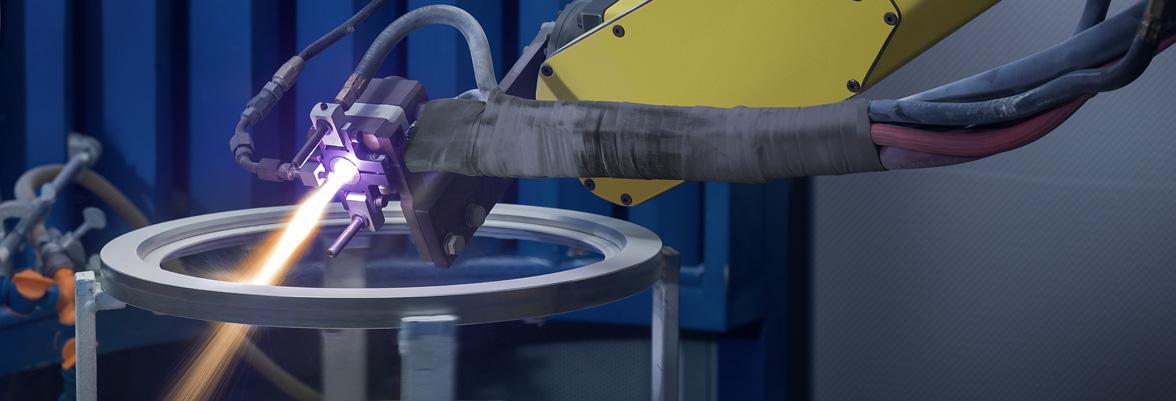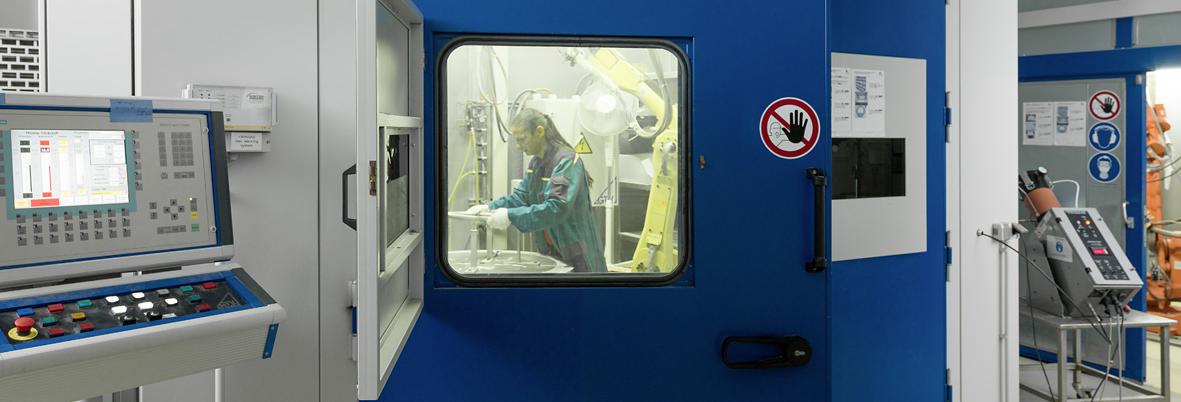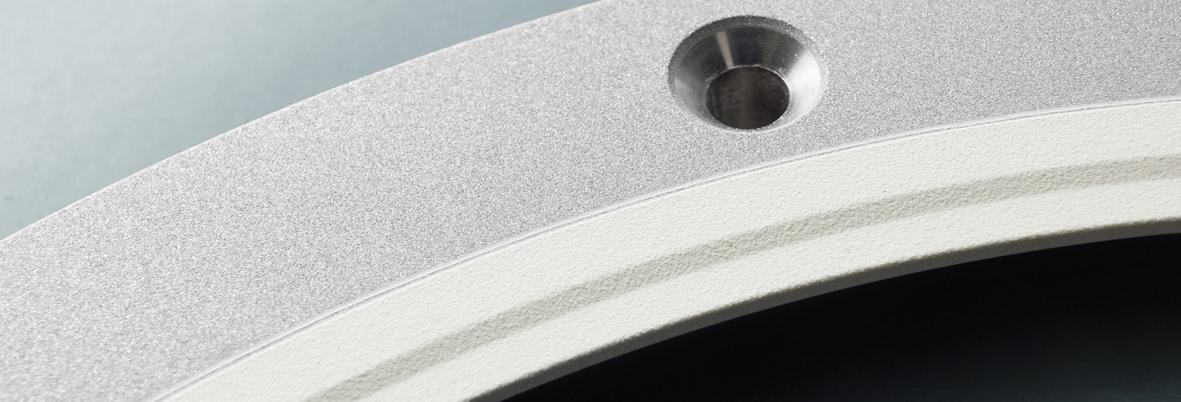Plasma Spray Coating
Test Lead-In CVD
Benefits
- Plasma spray coatings allow your components performance to be highly enhanced.
- Whatever criteria is important to you (heat barrier, corrosion protection, contamination reduction, osteocompatibility, component life... ) it can be improved, leading to higher equipement availability, longer component life and reduced equipment cost of ownership.
- Our plasma torch are robotic to ensure maximum process repeatability.
- Our engineering teams validate your specifications and needs and ensure adequate coatings to your applications.
Properties
- Typical thickness: 50 to 3000 µm
- Tunable Roughness depending on application: 5 µm to 30 µm Ra
- Porosity: tunable from < 1%
- Machining/polishing possible
Principle: a plasma gas is heated by an arc and accelerated through a shaped nozzle. This creates a plasma jet with a gas velocity up to Mach 2. Temperatures in the plasma jet are close to 10,000°C, which melts the respective material and allows it to be projected onto a surface where it cools and forms a layer.
Sprayed material: because of the versatility of plasma spray technology, a wide range of materials can be deposited. This ranges from low-temperature polymers up to metals, and also includes ceramics such as zirconia, yttria, aluminia, titanium- and chrome oxide, spinel and hydroxylapatite (Hap).
Properties of sprayed layers: adjustable thicknesses, roughness, porosity and purity, tailored to customer needs as ensured by our internal lab facilities.
Methodology: after the required specifications have been defined, Cleanpart implements the entire coating procedures that include tooling, surface preparation, controls and measurements, analytics and inline testing.


















